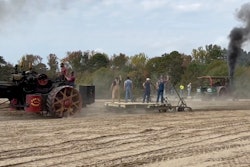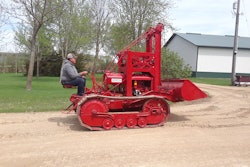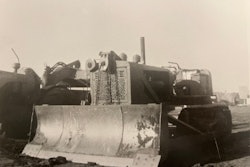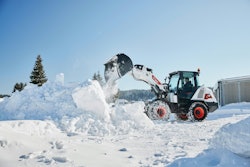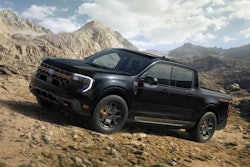Editor’s Note: This is the third installment in an ongoing series of videos from November 1, day one of the 100-Plus Years of Progress show.
Strange sounds were coming from a metal building at the Ederville tractor show.
Inside, an array of flywheels and pistons chugged, along with a steady mechanical hum and intermittent pops.
The room was filled with 30 or so antique hit-and-miss engines, seven of which were running. Each machine had its own quirky rhythm and unique set of whirling, bobbing and snapping parts.
In the video above, you can hear and see these mechanical works of art that brought affordable gasoline power to small farms in the early 20th century before electricity spread throughout the country. They ran everything from ice cream makers to saws. Before the engines, it was mainly water wheels, steam engines, horses and human muscle powering the farm.
The display – just a small fraction of the Ederville collection – was part of the Mideast Railroad Service’s 100-Plus Years of Progress show held in November in Carthage, North Carolina. “Ederville” is the location of the massive collection of tractors, trains, construction equipment and other vintage items collected over the years by the late Ken Eder.
The hit-and-miss engines, also known as stationary gas engines, were acquired like the other items in Eder’s collection. He bought them in large quantities during his travels around the country.
“I can't tell you how many is in there,” says Kyle Walker, who works for Mideast Railroad Service and helps keep Ederville’s tractors in shape. “I'd say there's probably 60 in one room and probably 30 in another, and that's just some of them. We’ve still got some on shelves in our storage that hadn't even made it up there and been put in the building yet.”
The Farmers’ Helper
The hit-and-miss aspect of the engines is designed for consistent speed for powering various equipment and appliances with a belt on one of the two flywheels.
The other flywheel is spun to start the engine. It also helps regulate the speed by a weight that gradually slides on one of its spokes from rim to center. When the weight reaches the center, it sets in motion a chain reaction to detonate an igniter – creating a “putt” sound – and returns the engine to set speed. The increased centrifugal force sends the weight back to the rim.
As you’ll notice in the video, some of them have water coolers to keep the engine from overheating. Others have hoppers you fill with water. Some also have throttle governors.
“They were used to do various tasks around the farm,” Walker says. That included running things like a grist mill, water pump or slab saw. Smaller ones ran household appliances.
“You’ve got a big motor to run your main power unit, like a sawmill,” he says. “Then you have a smaller one to do other jobs.”
Featured Engines
Hundreds of companies made hit-and-miss engines, each with its own characteristic sounds and looks.
The engines you’ll see in the above video are from the following manufacturers:
0:28 – The Foos Gas Engine Company
Based in Springfield, Ohio, the company claimed to be the largest engine manufacturer in the world. It was sold to Fulton Iron Works in St. Louis in 1927.
0:43 – The Abenaque Machine Works
Based in Westminster Station, Vermont, it started in 1894 and manufactured farm and marine gas engines from 3.4 to 15 horsepower and later up to 25 horsepower. Abenaque folded in 1921.
Located in Coldwater, Michigan, the now-defunct Regal formed in 1900 and became a global company primarily known for its marine engines.
The company was formed in 1873 by wooden-windmill inventor Palmer Perkins and his twin brother, Pardon. The company operated in Mishawaka, Indiana, until about 1925, when it moved to South Bend and ceased windmill production.
2:22 – Jensen Manufacturing Co. pump jack
Brothers Bill and Ray Jensen began manufacturing pump jacks of all sizes in about 1920 for use in shallow oil fields and for water wells. They expanded and moved to Coffeyville, Kansas, in 1926. Star Pipe Products purchased Jensen International Inc. in 2016 and changed the name to SP Foundry.
2:33 – Emerson-Brantingham Company
Based in Rockford, Illinois, the company started manufacturing farm implements in 1852 and began selling gasoline engines in 1912 after it bought Rockford Engine Works. Its engine production stopped in 1928, and the company was acquired by J.I. Case Threshing Machine Co.
3:18 – International Harvester Corp.
Formed through a consolidation in 1902 and based in Chicago, International Harvester built its first commercial gasoline engine two years later. The engines’ name was likely changed to Titan sometime in the early 1910s to match up with the Titan line of tractors being produced at Milwaukee.
5:34 – Unknown small engine powering a fan





